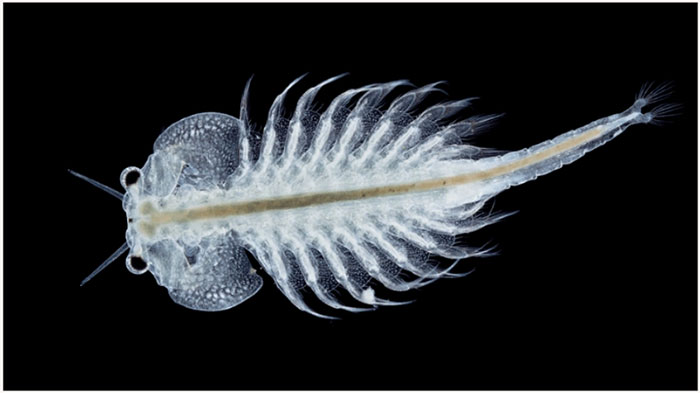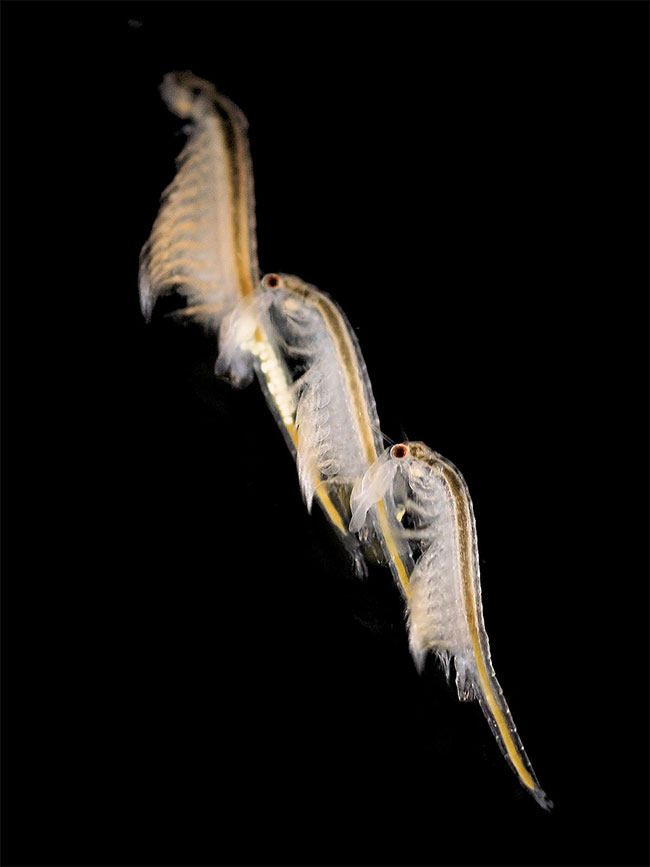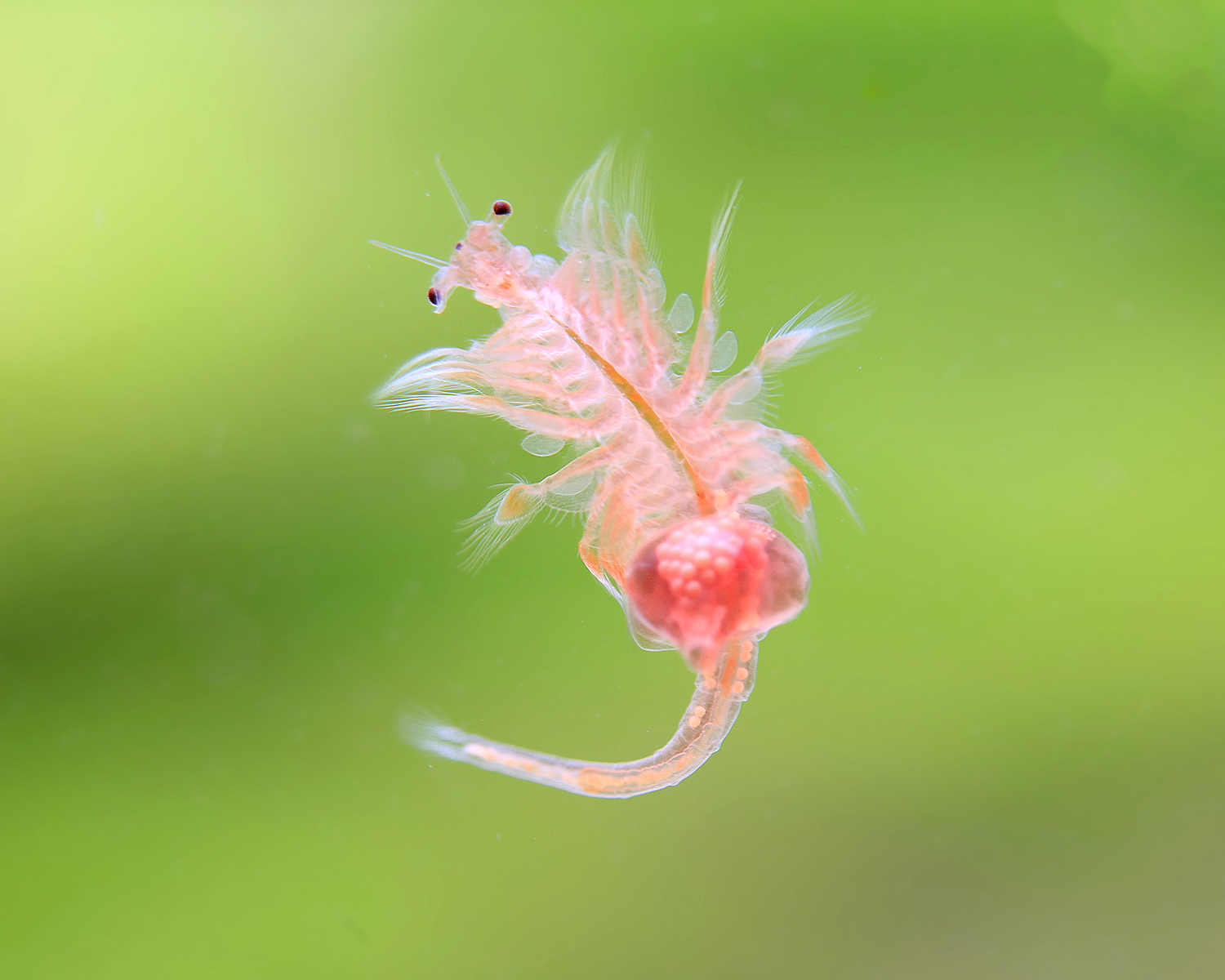Artemia Salina, an ancient shrimp that has existed for about 100 million years. They can live up to 10,000 years or more.
We think we know everything about our planet, however, there are still unexplored lands. What's even more interesting is that our world is made up of 71% water, meaning there are plenty of things and creatures lurking on the ocean floor, just waiting to be discovered or possibly hiding from us.
One such creature was recently discovered, named Artemia Salina, an ancient shrimp that has been around for about 100 million years. This aquatic crustacean lives near the bottom of the oceans and despite possessing a simple body, they have some amazing survival abilities that allow them to live for a very long time.

Artemia salina is a species of brine shrimp - aquatic crustaceans more closely related to Triops and cladocerans than to true shrimp. It belongs to a lineage that hasn't changed much in 100 million years. A. salina is native to temporary (non-sea) lakes, ponds, and saline waters in the Mediterranean region of Southern Europe, Anatolia, and North Africa. Several populations elsewhere were formerly known as this species, but are now recognized as separate, including A. franciscana of the Americas. That species has been widely introduced to places outside its native range, including the Mediterranean region, where it is locally outnumbered by native A. salina. This happened in parts of Portugal, Spain, France, Italy and Morocco.
This can also be considered as one of the most adaptable animals as it can live in extreme conditions without being affected. You can try burning it, submerging it in chemicals, or even boiling it above 100 degrees Celsius and it still won't die. This incredible creature is so adaptable that it can even live in temperatures of -273 degrees Celsius.
It is a fact that females of this species do not need males to reproduce as they can lay eggs that hatch immediately. However, if conditions are not favorable, in case of extreme temperatures or lack of food, the female lays eggs with hard shells. These eggs contain fully developed larvae that will emerge from the shell when conditions are favorable.
In the early 90s, some gasoline prospectors near the Great Salt Lake dug and found a bunch of these hard shells produced by Artemia Salina. When carrying the shells ashore, they hatch, but the larvae inside are already adults, according to experts' research.

Females can produce eggs by mating or through self-reproduction. There are two types of eggs: thin-shelled eggs that hatch right away and thick-shelled eggs, which can stay dormant for a long time, and will hatch when conditions are right. Thick-shelled eggs are produced when the body is dehydrated, food is scarce, and salt levels are high. If the female dies, the eggs will still develop further. After hatching, the eggs will become larvae (nauplii) about 0.5 mm in length. They have a single simple eye that senses only the presence and direction of light. Nauplii swim towards the light, but adults swim in the opposite direction.
From further analysis of the shells and carbon footprints, the scientists found that they were more than 10,000 years old, meaning the larvae were fully developed inside waiting to arrive at a more favorable place to hatch. This means that the larvae can survive much longer if left undisturbed, perhaps even 100,000 years.
Experts also say that the organism, while inside its hard shell, can resist extreme dehydration even up to 97%. That's when the creature stops and enters a moment of pause, much like how a bear hibernates in winter, but more complicatedly.


Tnatural algae, they live in salt lakes. They are almost never found in the open ocean, most likely due to lack of food and defenselessness. The resilience of these organisms makes them ideal specimens in experiments. Artemia is one of the standard organisms for chemical toxicity testing including screening for insecticidal activity - used by Blizzard et al. 1989 to screen hundreds of semisynthetic avermectins, and Conder et al. 1992 for the metabolite of Streptomyces fumanus, dioxapyrrolomycin.
This process, known as anhydrobiosis or more simply, life without water, gives rise to the ability of an organism to live almost without water, which is amazing because water is the very essence of life. our existence, not only people but everything around us.
- The poor dog is paralyzed and can’t stand up crying for everyone’s help and doesn’t leave him in this helpless moment
- The moment when the brave loyal dog fought to the last moment sacrificing himself to protect the safety of his owner from the attack of venomous snakes made us extremely emotional and couldn’t hold back his tears me
- The touching story of bubbles and her puppies will probably bring tears to your eyes
- Top 12 Animals With The Longest Tongue On Earth
- Top 15 animals with the most unique eyes in the world










